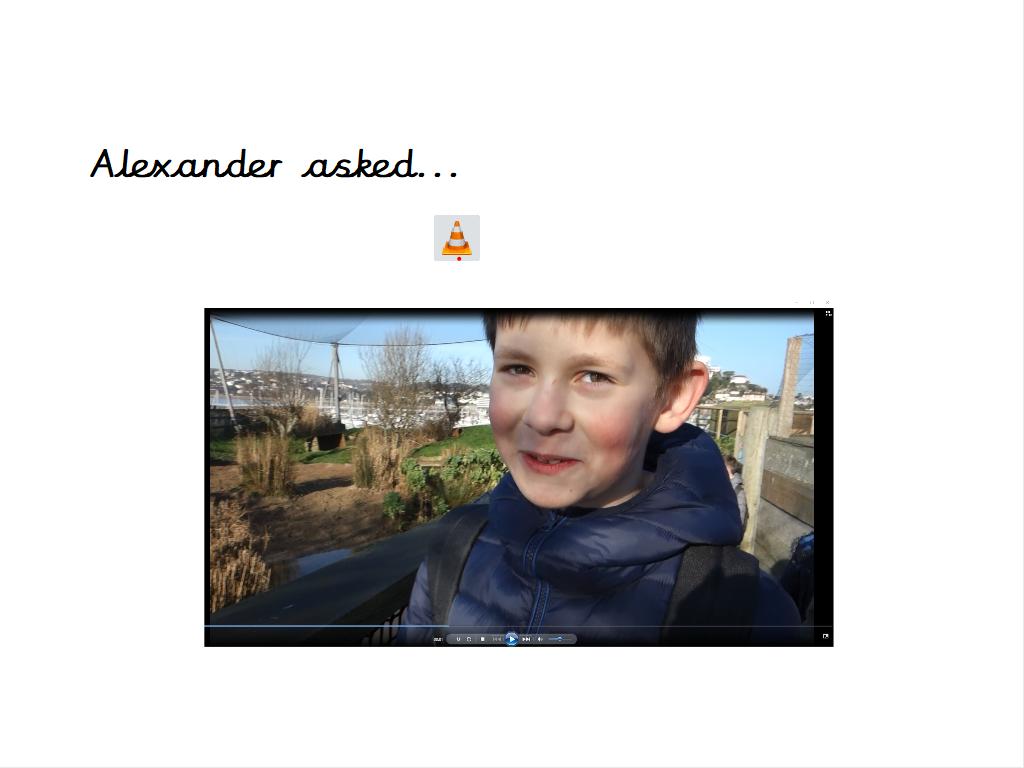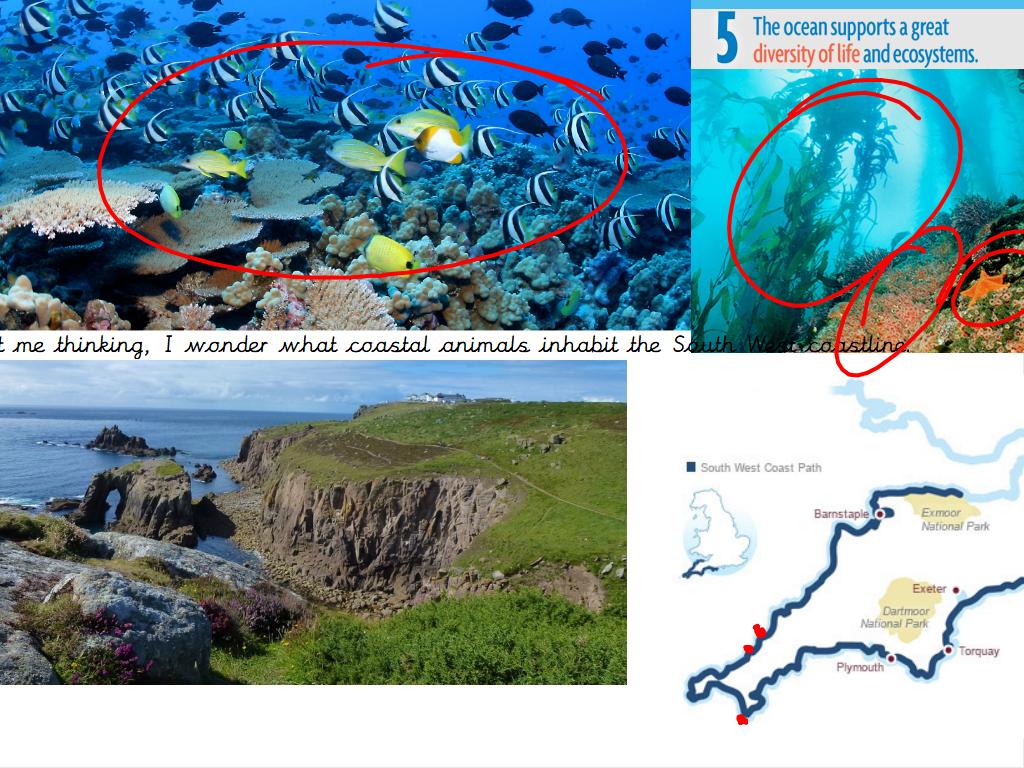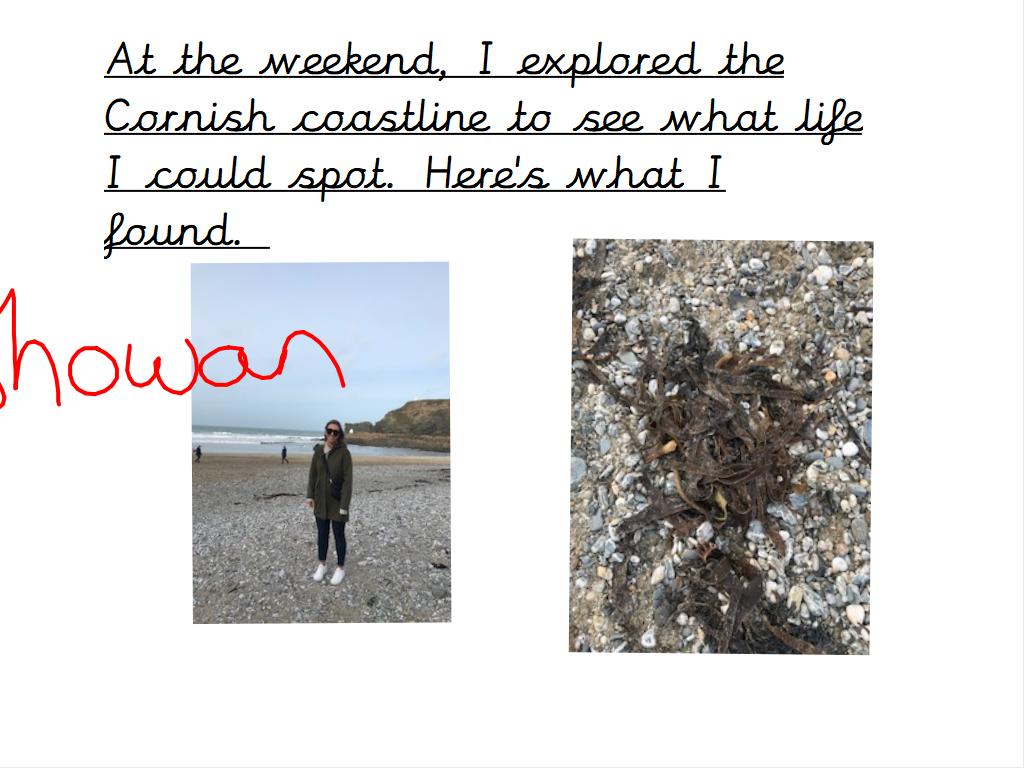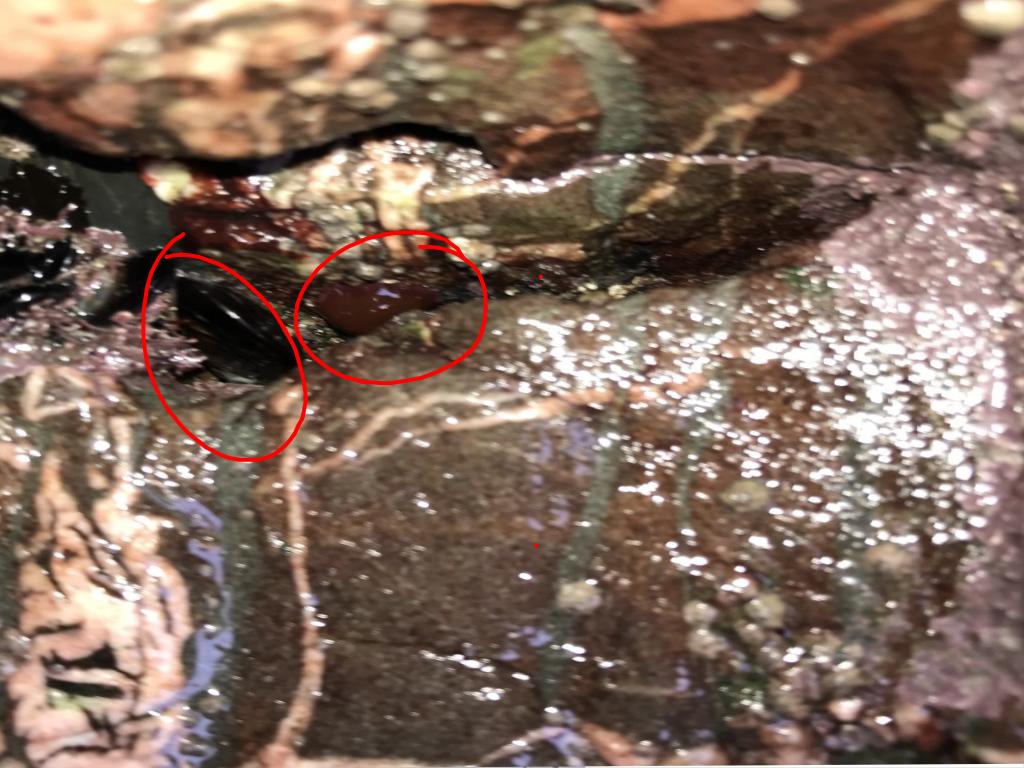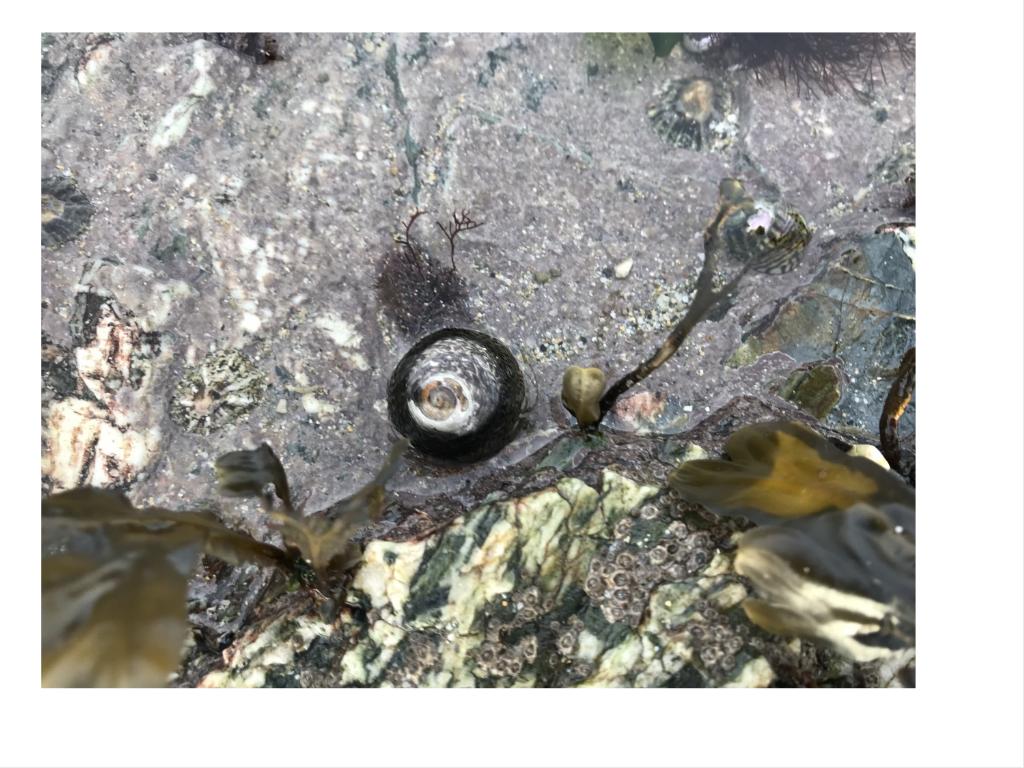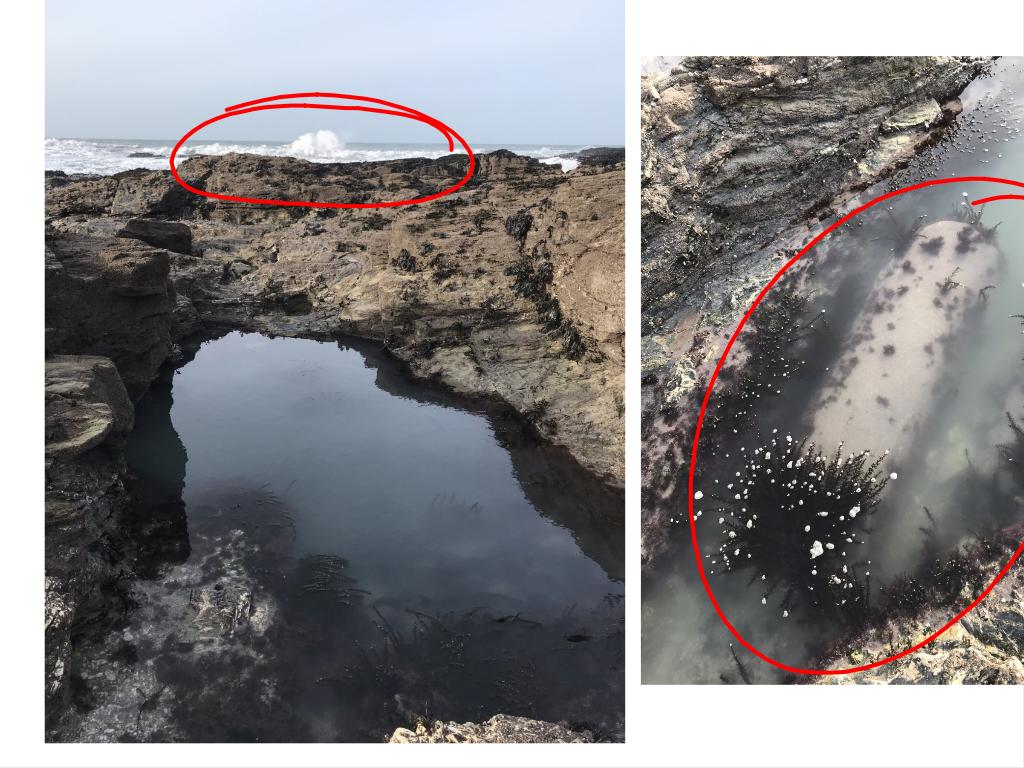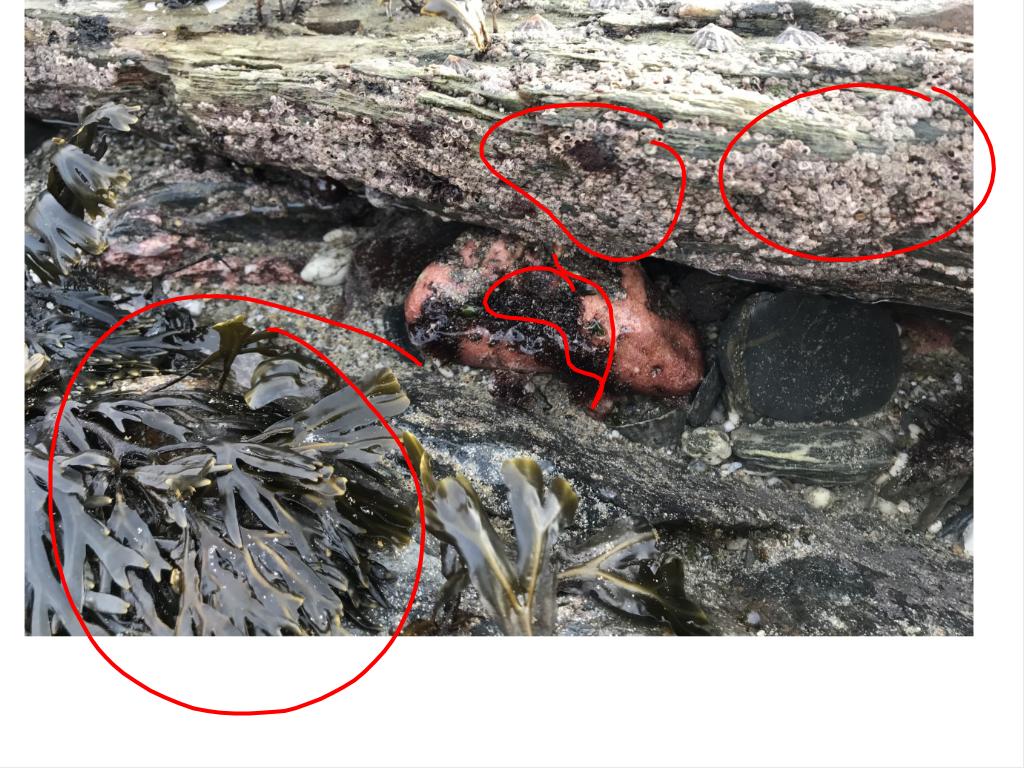
Ocean Literacy
Ocean Literacy consists of 7 principles. Understanding these principles is essential for understanding how central the ocean is for the plant and it’s inhabitants.
This pilot project focuses mainly on the Ocean Literacy principle ‘the Ocean has a great diversity of life and ecosystems’,
but other principles are also regularly referred to throughout the project depending on the questions that are raised by the pupils
and the content of the initial stimulus provided during the aquarium visit. It is therefore a very versatile project to engage with in
emphasising different ocean literacy principles.
It is often the case that younger pupils, even if they live relatively close to the coastline, have limited experience of the Ocean and a
limited understanding of Ocean Literacy principles. Thus, pupils may come into a project with variable experiences of the Ocean.
Commencing the project with an aquarium visit enables pupils to have some prior experience of the Ocean before engaging in learning in school,
and thus enables all pupils to ask relevant questions and engage with the learning

Teaching and Learning Map
The Stimulating Questions project is based on an arts-based approach of using a ‘provocation’ or stimulus event in the form of an aquarium visit to prompt pupils to engage in questioning about the Ocean and then in learning and creating responses about the Ocean based on their questions. Due to the unknown nature of the students’ questions at the outset, this teaching and learning map draws on the example project conducted as part of the Ocean Connections project. Teachers setting up similar projects themselves might frame the aquarium visit stimulus event differently, to trigger pupils’ questions related to a different aspect of Ocean Literacy.
Teachers select questions to use at the start of each lesson in the project, to provide some structure to the learning.
We suggest that prior to the aquarium visit and the formal start of the project, children complete a ‘What you know now’ activity1. This enables a clear progression from the start to completion of the project to be demonstrated despite it’s open-ended nature, and for the children to see their own learning develop together. Periodically, the children add to the page (using different colours) to show the development of their ocean literacy.
Stimulating Questions
-
The aquarium visit was designed to stimulate pupils' questions to guide the rest of the project. The lessons in the project then explore these questions. Throughout the course of the project, several children’s questions can be explored.
-
Rather than adopting a typical learning objective for each lesson, lessons are known as X’s question. This empowers the children as it promotes their perception of themselves as learners who are in charge of their own journey and that of others.
-
The children’s questions are not reworded or altered in any way
-
Watch the recorded video of the question before beginning the session. An example of a question from the pilot project is, ‘What are those penguins called?’.
This sparked an interesting conversation as the ‘penguin’ in question was not a penguin at all. In fact, the bird shown in the video was a wading bird.
This was established after contacting Matt Lewis (a UK partner in the project) a professional zoologist who is part of the project’s learning community.
Other questions explored during the projected included: 'how long does a penguin live?', 'what type of penguin is that?', 'why do we need waves?'
and 'why does that bird have such skinny legs?' Allowing space for these questions allowed for multiple possible learning pathways to develop.
Exploring Ideas
-
Teachers design lessons with learning activities to enable pupils’ questions to be answered.
-
Draw on expertise from the aquarium educator if required, via email questions or questions asked and responded to within the Ocean Connections VR tool space for the project
-
Throughout the project, record new questions raised by pupils and draw on these as appropriate for future lessons.
For example, in the Ocean Connection pilot project, one child asked the question, ‘Why does the penguin have a red strip on its arm?’
The ‘red strip’ the child was referring to was an animal tag. As a class this was explored by going out in to the school grounds and counting the local birds.
The results were extremely varied which raised all sorts of further questions and ideas.
-
The basic premise remains the same each lesson for as long as the project continues: introduce question, link to ocean principles and explore in a creative way.
Each week, the children’s enthusiasm for the project grew. They anticipated whose question would be asked next and hoped it would be their’s.
Communicate ideas
Multimedia
Links

Aquarium
Ocean Adaptations Workshop
In this pilot, pupils visit a local aquarium (in the pilot project, Living Coasts, Torquay) for an introduction to the Ocean, and the biodiversity and adaptations of marine organisms in the Ocean. An aquarium visit offers a way of enabling pupils to access the Ocean differently, observing what can be seen below the Ocean surface. The knowledge and expertise offered by the education teams in aquaria are very helpful to complement the teacher’s expertise and bringing these together, a stimulating and engaging experience can be developed for the pupils. An aquarium visit is used here as a stimulus for pupils’ questioning about the Ocean. It can therefore be adjusted and different activities undertaken depending on the Ocean literacy focus of the project. In the case of this pilot project within Ocean Connections, the focus was on biodiversity and the following activities were used in the aquarium visit as the stimulus for pupil questioning. Pupils are also able to re-connect with the aquarium experts throughout the project if their questions require specific expertise.
Exploring the Aquarium (2 hours)
Pupils are guided around by an aquarium educator and watch a number of animal feeds (penguins, fur seals, otters) and talks.
Teachers prompt pupils to ask questions and take video recordings of the questions raised for them by their experiences.
Workshop (45 minutes)
Pupils participate in an educator-led workshop exploring how marine organisms are adapted to their environment.
A short powerpoint presentation encourages pupils to consider the challenges faced by animals living in the sea, and to look at the feet, flippers,
fur and feathers of the animals they had seen – how would these help them live in the wild?
To stimulate exploratory learning and discussion, the pupils then move around the room in small groups, picking up and investigating real
marine objects and answering simple questions about them, for example:
Pilot whale skull - where are the whale’s nostrils? How does this help it breathe? Is the skull the same shape as the whale’s head (in a photo)
Pupils are given a short time with each artefact (3 mins) to maintain attention.
Other objects included the shell from a green turtle, the tooth from a sperm whale, baleen from a fin whale, a sawfish rostrum, and a taxidermied otter – all from the aquarium’s collection. Pupils are allowed to play with and touch the objects to get a real feel for them and help to stimulate their thinking.
Multimedia
Links

The Big Picture
Pupils do not always have the opportunity to ask their own questions about key aspects of the curriculum, and it is often the case that in learning about
biodiversity, terrestrial rather than marine organisms dominate (Link to State of the Art report). In this project, teachers draw on pupils’ own questions,
stimulated by a visit to a local aquarium (real or virtual) to design teaching about the Ocean Literacy principle ‘the Ocean supports a great diversity of
life and ecosystems’. Learning experiences are designed by teachers in response to pupils’ questions to explore their thinking about the Ocean and open up
space for them to learn more. Creative and digital pedagogies were used to support this learning, using artistic experiences and VR within the learning.
Pupils are also enabled to ask their questions an ‘expert’ from the aquarium, throughout the project.
Following an engaging and immersive trip to a local aquarium, Key Stage 2 (9-10 year old) children explore learning about the ocean based on their own questions.
It is important to provide the children with a tangible experience of the ocean and
its inhabitants to provoke questions that were relevant for each child, that can then drive the rest of the project.
Whilst exploring an aquarium and participating in an ocean adaptations workshop, the children are filmed asking their own questions. These questions then become the learning focus for subsequent sessions. This child-led project empowers the children
as they are allowed to take risks and control the focus of their learning.
Back at school, pupils engage in learning through a range of activities (see teaching and learning map), including a VR experience, a ‘what if’ experience asking them to imagine adaptations they would need to survive in the Ocean, an art-based experience to create a biodiversity display of marine environments and so on – these all linked directly to pupils’ questions and so may vary depending on the needs and interests of the pupils. However, the focus is maintained on the ocean literacy principle of biodiversity through the initial stimulation and skilled teacher-design of activities to help pupils answer their questions. Thus, creative teaching and learning is central to the project alongside a questioning, inquiry approach to teaching about science in society.
Multimedia
Links

Creative Pedagogies
Creative pedagogies are able to foster pupils’ sense of empowerment and agency and capacity to make change.
Drawing on creative pedagogies to support teaching about Ocean Literacy enables pupils to not only develop an understanding of the scientific
basis of the key principles they are learning, but also engage physically, through embodied dialogue, and emotionally with the Ocean.
In this project, the ‘dialogue’ feature of creative pedagogies is at the heart of the project, as pupils’ raise questions and teachers and
other pupils respond.
In the project as enacted during the Ocean Connections pilot, the elements of creative pedagogies drawn into the teaching and learning are shown in the
teaching and learning map. These might be different in another project based on the core idea of student-driven questioning.
In the pilot project here, linking ocean literacy and associated elements of environmental sustainability was an important part of the project,
which relates closely to the ethics and trusteeship feature of creative pedagogies: the idea of thinking about our own responsibility for what we create
and the actions we take in the world. For example, when we explored the question that referred to species of penguin, we linked the overarching question
to diversity of species in our local region and understand what the diversity of species indicated in terms of climate change.
The children were tasked with visiting their local stretch of coastline to explore rock pools and cliffs to see what native wildlife they could find.
Another example of creative pedagogies enacted in this pilot project in response to pupils questioning, could be seen when pupils were asked to create a moving seascape by
creating a detailed background and puppets of the native species. This required pupils to carefully investigate the science to understand the
relationships between the organisms’ adaptation and their environment, and draw on their artistic knowledge and understanding to communicate these
relationships, working in a transdisciplinary way to draw on relevant knowledge from different disciplines to respond to a challenge set for them.
The children enjoyed having the freedom to use various materials to create puppets based on the local species of fish, crustacean or sea mammal.

Digital Technologies
The Ocean is not easily accessible, and it can be challenging for pupils to get primary experience with marine life,
particularly in a school setting. Even where pupils are able to visit the coastline, it is challenging for them to understand
the depth and scale of the Ocean and consider the diversity of marine life beyond that which can be easily observed at the surface
or on the coast.
Digital technologies such as VR can enable pupils to have a more immersive experience and stimulate their interest in,
and questions about, the Ocean and marine life beyond the more easily visible. The Ocean Connections project values pupil’s
learning of Ocean literature over their use of digital technologies, where technologies are able to promote learning we recommend their use.
In this project, video recordings or photographs made using a 360 underwater camera within the aquarium tanks and,
where possible, in the Ocean itself, can be uploaded onto the Ocean Connection VR-platform and viewed using a
VR headset (e.g. Occulus Quest 2 or Google Cardboard). This enables pupils to see the invisible and raises new questions.
Pupils find this very exciting, igniting their interest.
With this tool, pupils are able to populate their own VR space,
by adding text, sound, video, objects and hyperlinks in order to tell a story and share their ideas. If VR headsets are not available,
pupils can view the 360 images on the Ocean Connections VR tool using a standard tablet/computer screen.
Links

Teacher Reflections
content

Design Material
content
